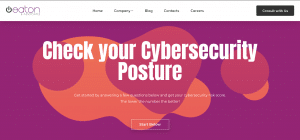Declutter Your Digital Detox: Cleaning for Your Files in 2024
Declutter Your Digital Detox: Cleaning for Your Files in 2024
As the fresh year beckons, we all crave a clean slate. But let’s face it, our digital lives often resemble an overflowing attic crammed with dusty files and forgotten folders. Fear not, tech hoarders! This New Year, it’s time to embrace a digital detox and spring clean your virtual world. Ditch the digital debris and reclaim your sanity (and storage space) with these tidying tips:
1. Tame the Desktop Jungle:
- Embrace ruthless deletion: Scan your desktop for unused files, outdated documents, and downloaded clutter. Drag them to the digital bonfire of oblivion!
- Organize like a pro: Create systemized folders for projects, documents, photos, and downloads. Labels are your friends, use them wisely!
- Wallpaper wisdom: Pick a calming image that inspires productivity, not digital despair. Remember, a tidy desktop equals a tidy mind.
2. Conquer the Email Avalanche:
- Unsubscribe with zeal: Unsubscribe from those nagging newsletters and promotional emails you never read. Free your inbox from the constant digital drip-drip-drip.
- Filter like a ninja: Employ smart filters to automatically categorize emails based on sender, keywords, or priority. Tame the inbox beast with the power of organization!
- Archive smartly: Don’t delete everything. Create dedicated folders for important emails, old projects, and personal correspondence. Remember, archiving is not deleting, it’s organized hibernation.
3. Photos: From Chaos to Chronological Joy:
- Face the duplicates: Scan your photo library for the dreaded doppelgangers. Keep the best version, banish the rest. Storage space is precious, use it wisely!
- Organize by time and theme: Create folders for years, occasions, or even specific trips. Label them clearly so you can relive those memories with ease.
- Cloud it up: Consider cloud storage for long-term photo archiving. Free up local space and access your cherished pics from anywhere.
4. Social Media: Detox and Digitization:
- Unfollow the noise: Take control of your newsfeed. Unfollow accounts that drain your energy and add little value. Curate your online space for inspiration and positivity.
- Organize memories: Download favorite photos and videos from social media platforms. Don’t rely solely on their servers for your precious memories.
- Privacy protection: Review your privacy settings on all social media platforms. Decide what you share and who sees it. Your digital life, your rules!
5. Software Savvy: Unwind the App Mess:
- Uninstall the unused: Go through your installed programs and ruthlessly uninstall anything you haven’t touched in months. Unused software is just digital cobwebs gathering dust.
- Update the essentials: Ensure your essential software is up-to-date to stay secure and efficient. Outdated software is like a leaky roof – vulnerabilities waiting to happen.
- Organize your launchers: Group similar apps together, create folders for specific tasks, and make your workflow smooth and accessible. A little organization goes a long way!
Bonus Tip: Reward yourself! As you conquer each digital clutter mountain, celebrate your progress. A tidy digital life is a happier, more productive one. So grab your virtual broom, roll up your sleeves, and embrace the liberating joy of a digital detox. Happy cleaning in 2024!
Remember, even small steps can make a big difference. Start with one digital space, tackle another tomorrow, and soon, your virtual world will be sparkling clean and organized. Happy New Year and happy (digital) spring cleaning!
Resources:
Microsoft Outlook Clutter Button: Move email to Clutter
G-Suite File Organization Organize in G-Suite












